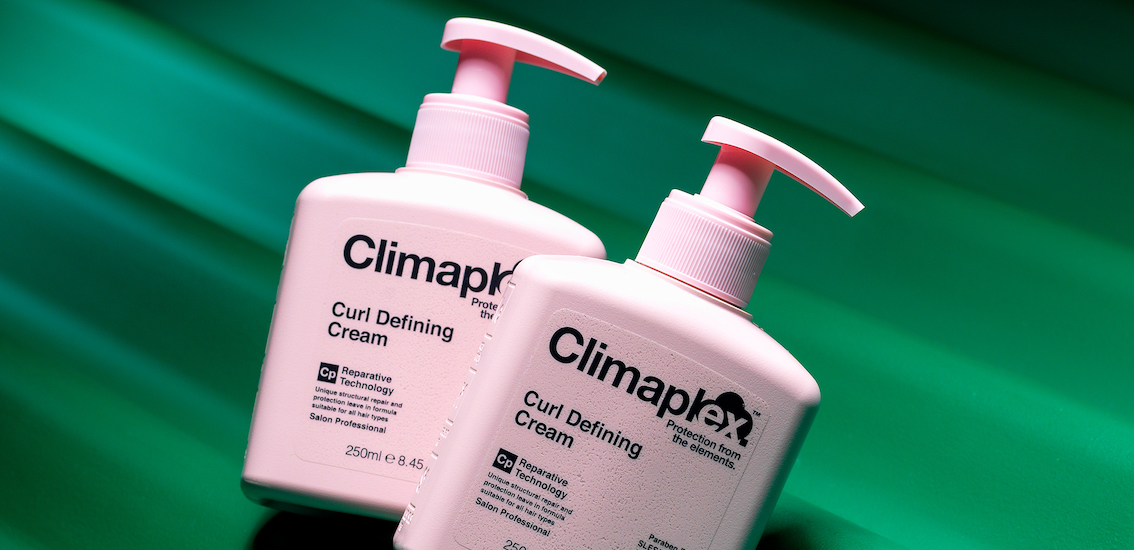Today, it’s not only people who experience climate anxiety, but it’s also their beauty products.
Climate anxiety, a sense of worry surrounding how climate change will impact daily life and wellbeing, has found itself creeping into beauty product formulations. Hair-care brands like Climaplex and skin-care brand Pour Moi have developed products to combat climate change’s impact on the quality of hair and skin. And skin-care manufacturer TwinCraft Skincare promotes to prospective clients that it can develop “skin care for extreme weather.”
It has been documented that extreme heat, humidity, drought and other side effects of climate change impact the quality of makeup and skin care. For example, formulations break down and degrade in extreme heat, while humidity serves as a breeding ground for bacterial growth. Also, products like SPF become less effective when faced with stronger UV radiation. For the most part, the topic of anti-pollution skin-care products has been restricted to companies selling urban pollution- and blue-light-emitting electronic devices. But now, brands are increasingly launching products to address the effects of climate change, such as extreme heat and UV radiation, and even the impacts of forest fire smoke.
“This [traditional] concept of [anti-pollution beauty] is almost outdated because it does not take into consideration many other aggressors affecting hair and skin,” said Giannantonio Negretti, co-founder of Climaplex.
According to Negretti, climate change-related issues like acid rain can impact hair porosity, for example, which Climaplex’s bond-building products protect against or repair. Notably, Climaplex packaging is made from 100% post-consumer recycled materials, and the pumps are fully recyclable, as well. Climaplex sells seven products including styling products, shampoo and conditioners. U.K.-based Climaplex expanded to Target at the end of March.
“We’ve tried to [indicate] that climate change is the problem and Climaplex is the solution,” said Simon Ostler, co-founder of Climaplex. “But we’re not eco-warriors, so we are refining our approach in terms of how we communicate this message to our consumers.”
Ostler and the Climaplex team are sharing and refining their communications in three main ways. First, they’ve hired public relations to speak to media to share the brand’s messaging. Second, they’re using guerilla marketing to make a splash. And finally, they’re leveraging traditional social media strategies to emphasize the brand’s messaging around specific benefits of Climaplex products.
Ad position: web_incontent_pos1
In May, Climaplex will send hired models to 10 of Target’s biggest markets, including New York and California, to purchase Climaplex products while wearing protective helmets and T-shirts stating, “Climate change is the problem, and Climaplex is the solution.” Climaplex also sent free products to 48 unpaid micro beauty influencers as part of the brand’s initial dip into influencer marketing. The team is also considering hiring paid influencers and exploring non-traditional influencers as other brands have begun to do.
Though the idea that beauty products are going to prevent or repair the effects of climate change may seem gimmicky, there are well-understood correlations between the rising global temperature and skin health and appearance. Scientific data modeling predicts that an increase in ambient temperature of 3.6 degrees Fahrenheit could increase the incidence of skin cancer by 11% globally by 2050. Another study found that temperatures above 72 degrees Fahrenheit more than triple the risk of sunburn, which is skin damage closely correlated with skin cancer.
According to the National Interagency Coordination Center, wildfires burned more than twice as much land area per year from 2000 to 2018 than those from 1985 to 1999. The smoke itself contains hazardous components ranging from organic compounds to black carbon and man-made chemicals that can cause premature skin aging. This type of information informed the creation of Smoke Alarm serum drops in 2022 from climate-focused skin-care brand Pour Moi. Pour Moi offers products tailored to specific geographies, including the Midwest and Northeast.
“The world doesn’t need another eye cream or another hydration mask. In the 21st century, [we need products] that address the unique problems that skin appearance and [skin] health are facing,” said Ulli Haslacher, founder and CEO of Pour Moi Skincare.
While Smoke Alarm Drops can be used when exposed to other smoke-producing scenarios like campfires, Haslacher said the product was created in direct response to wildfires. It is designed to be used as needed and can be added to other skin-care products or used by itself. She said the product works by forming a protective layer on the skin that “captures” smoke particles and prevents them from penetrating the skin. While wildfires in the U.S. may seem like a problem for the Western and Northwestern portions of the country, smoke from those parts of the country has drifted to the east as recently as July 2021.
Ad position: web_incontent_pos2
Haslacher declined to share sales figures for the 4-year-old direct-to-consumer brand but did note that the Midwest is its top market and where the brand advertises the most. She also said that 30% of Pour Moi’s customers are men, even though the brand doesn’t specifically target them. Pour Moi focuses on grass-roots marketing, with Haslacher making local television news appearances in markets like Houston, Texas and Minneapolis, Minn. Pour Moi also brought on Minneapolis television personality Elizabeth Ries (@Elizries; 40,200 Instagram followers) as its first brand ambassador in February.
Pour Moi is not currently advertising or promoting its Smoke Alarm Drops, though it will likely begin to do so close to summer when wildfire season begins, said Haslacher. And, for every purchase of Smoke Alarm Drops, the brand will donate one bottle to a firefighter.
“I’m only going to talk about wildfires,” she said. “I know it’s not going to sell the product as well, but for me, it is about raising awareness.”




